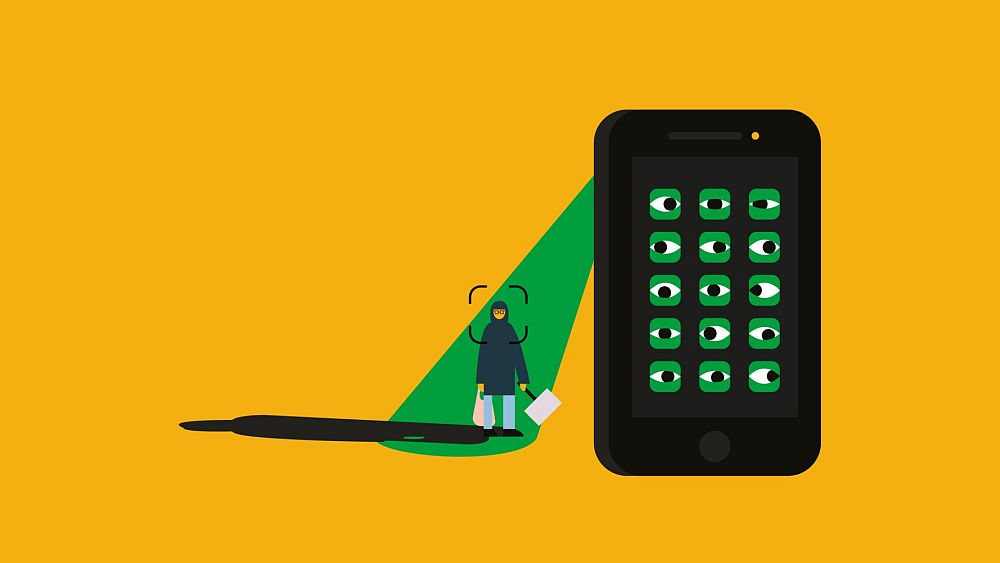China is turbocharging crackdown on Iranian women, say experts

Iran’s government has added yet another weapon to its arsenal of oppression.
On Saturday, authorities announced they were installing cameras in public places that can identify and punish women who do not wear a headscarf, as mandated by Iranian law.
Those detected not covering their hair with a hijab will receive a “warning text message”, as reports suggest Iranian officials effectively want to replace the unpopular morality police that enforces the rules with surveillance.
But Iran is not acting alone.
Though it has not publicly said so, Craig Singleton, Senior Fellow at the US-based Foundation for the Defense of Democracies “highly suspects” the high-tech cameras came from China.
Cemented by a secretive 25-year cooperation agreement struck in 2021, Beijing has helped Iran’s beleaguered regime build an intricate surveillance state, prompting some commentators to warn Iranians face a “dystopian future”.
Facial recognition technology and powerful tools for video and crowd surveillance, phone and text monitoring have all been supplied by Chinese companies, while Iranian government officials have reportedly received training on matters such as “manipulating public opinion”.
‘Gender segregation’
While the impact of the growing “surveillance state” is ubiquitous, touching all of Iran’s some 88 million people, women are particularly targeted.
“Technology continues to restrict the movement of women in Iran and prevent them from enjoying basic freedoms, like going to the spaces they want to or dressing how they like,” said Melody Kazemi of Filterwatch, a monitoring group of online censorship in Iran.
“It’s contributing to their treatment as second-class citizens, allowing women to continue to be arrested, intimated or harassed.”
Starting in September, mass anti-government protests swept through Iran after the death of 22-year-old Mahsa Amini, who was arrested for allegedly violating the country’s strict dress code.
The women-led protests eventually subsided amid a torrent of violence and repression by the state, including mass arrests and executions.
Still, technology from Beijing has helped “prop up” the deeply unpopular Islamic government, Singleton told Euronews.
While it could not “neutralise the root causes of unrest”, he said: “For now, such technologies appear necessary, albeit insufficient, for authoritarian regimes like Iran to completely eradicate all forms of dissent.”
Online tools played a central role in the regime’s crackdown on protests last year, with mobile and internet surveillance used to retrospectively identify and detain demonstrators.
China reportedly sold Tehran a powerful surveillance system capable of monitoring landline, mobile and internet communications, though a wide variety of equipment is likely to have been used in the crackdown.
‘It’s been happening for a long time now’
Using technology for suppression has a long history in Iran.
“It’s not a new thing,” said Kazemi. “We shouldn’t forget that Iran already has used older technologies and pre-existing methods to oppress women, dissidents and opposition.”
In 2019, Iranian police set up an automated system of cameras to warn women flouting the dress code in their cars.
Hundreds received text messages summoning them to the so-called morality police. However, Kazemi says there were “all sorts of false positives”, with long-haired men getting told off for not wearing hijabs.
“No matter where these technologies come from. Even in a democratic country with an independent judiciary, they go wrong and produce errors all the time,” she said. “They are designed in a way that automates human rights violations.”
Behind China-Iran cooperation is, of course, money.
Chinese surveillance firms, like Tiandy, Hikvision, and Dahua, are “keenly focused” on finding new markets outside of mainland China, which is already “saturated” with intrusive surveillance, claims Singleton.
Part of this is testing whether Chinese tech can be rolled out overseas.
“Iran has transformed itself into a Middle East incubator for Beijing’s techno-authoritarianism, in essence enabling Chinese firms to deploy their systems abroad to determine whether they are compatible with non-Chinese networks,” said Singleton.
He called such “interoperability” essential if these “Chinese firms want to market their surveillance products to other authoritarian regimes.”
But there are geopolitical motives, too.
“Beijing’s great-power ambitions hinge, in part, on… [its] technological supremacy,” said Singleton – something “the US and its allies have fallen short in countering.”
Much high-tech equipment has been developed amid China’s repression of Uyghur Muslims and other ethnic minorities, which the US has called a “genocide”. It has involved monitoring smartphone activity and gathering biometric data, including DNA, blood type, fingerprints, voice recordings and face scans, alongside mass detentions and sterilization.
‘There’s a lot we still don’t know’
But Beijing is not the only country driving Iran’s technological control, with some technologies being homegrown.
An investigation by The Intercept found that authorities had baked SIAM spyware into the country’s mobile networks to track, decrypt messages and block internet access on smartphones.
Other stuff comes from the West.
In December, the US blacklisted a Chinese video surveillance company Tiandy Technologies provided facial recognition technology to Iran’s Revolutionary Guard Corps, widely considered the true power-makers in Iran.
The processors for its video recording systems were reportedly made by the US semiconductor giant Intel Corp, though it “ceased doing business with Tiandy following an internal review.”
Still, researcher Kazemi said big questions hung over what technologies were being used and where they came from.
She warned that Iran’s regime could also be overinflating claims around the tech it had in a bid to intimidate people and deter future dissent.
“Just because the Iran government says they are using this type of technology, I wouldn’t rely on it one way or another,” she said. “It could just be rhetoric.”
“There is an appetite from the government to suggest that they are getting better and more efficient as more and more people are trying to resist.”
In any case, Melody said more research was needed into technology and its uses around the world, with much currently shrouded in mystery.
“We need to get more accurate information to give people better advice on how to resist them.”
China is turbocharging crackdown on Iranian women, say experts
Source: Reporters View PH
No comments